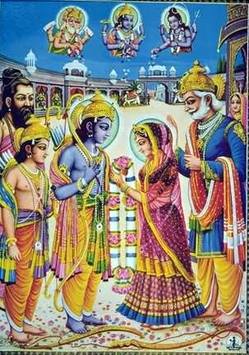After the interest generated in my last post about a Bhakti interpretation of Sita’s banishment, I thought it’d be fun to do a review of Nina Paley’s Sita Sings the Blues. Before I could get to it, though, my friend Kaustubha at The Bhakti Collective posted his review. Great minds, I guess, think alike.
Maybe I’ll eventually get around to writing one of my own. For now, though, I really appreciate what Kaustubha does with his review. He looks at Sita Sings the Blues from a number of angles, maintains an open mind and gives her the benefit of the doubt, but politely articulates his own reservations and objections. He writes with humility and integrity, alternating between his feelings as objective critic, sympathetic viewer, and practicing devotee. I like Kaustubha’s delicate and measured appreciation of Paley’s art, even as he raises eyebrows at the theological implications of it.
Here is the film:
Here are some excerpts from Kaustubha’s review:
I was both delighted and disappointed by Sita Sings the Blues. Delighted by its creativity, but disappointed by its narrow understanding of the ancient story of Sri Rama…
Sita Sings the Blues indeed has a captivating beauty of its own. But the Ramayana’s beauty, traditionally exemplified in the character of Rama, is often displaced by Paley’s resentment toward her ex-husband.
…Paley allows the character of Rama to morph from the Ramayana’s hero into its villain….
But before elaborating on this criticism, I’d like to share some of what I found to be so great about Sita Sings the Blues. Unlike other animated Ramayanas which have been presented as children’s cartoons, Sita Sings the Blues is a mature artistic achievement. Its often fast paced progression is bursting with the colors and styles of India. It dazzles with wit and charm. From beginning to end, I was astonished with Paley’s cleverness. She masterfully combines several styles of animation. Shaded, squiggly drawn figures and collage style photography are combined to illustrate Paley’s own story. The bulk of the Ramayana story is animated with several styles of Indian painting as well as something resembling Betty Boop cartoons. Traditional South Asian shadow puppets with Indian voices are used as informal narrators. As they struggle to recall the details of the Ramayana story, and chuckle at the ones they find implausible, a variety of Hindu images enter and exit the screen illustrating their discussion. The result is not only captivating and humorous, but also brilliant as it considers some of the most puzzling questions about the Ramayana in a way that feels like a casual chat amongst friends sitting in a restaurant waiting for their masala dosas to arrive…
I understand that an artist should be free to express themselves according to their inspiration. And I decry the kind of backlash that Paley has received from Hindu fundamentalists that see no merit in her work. And while I embrace much of the feminist platform, I believe that to try to understand the Ramayana through the lens of feminism, particularly that which is fueled by resentment, is to miss its true value. While such an approach may be appropriate for interpreting an Alanis Morisette song, applying it to the Ramayana results in a very warped retelling. The greatness of the character of Rama, his heroism, kindness, wisdom, honor and the tenderness of his love for Sita, which are fundamental to the Ramayana, are entirely missed by Paley. Essentially, Paley takes parts of the Ramayana’s story and uses them to express her own feelings of pain and redemption. She is admirably frank about this: “I didn’t set out to tell the Ramayana, only my Ramayana. I wanted to be very clear about my point of view, my biases”….
In his review of Sita Sings the Blues, film critic Roger Ebert, who admittedly knows nothing of the Ramayana, writes “It tells the story of a brave, noble woman who was made to suffer because of the perfidy of a spineless husband…It is about a prince named Rama who treated Sita shamefully, although she loved him and was faithful to him.” A narrow and skewed idea of Rama, to be sure. But for one unfamiliar with the Ramayana, Paley’s film can lead to no other conclusion….
The subject of Rama’s banishment of Sita has been questioned, contemplated and commented on by a variety teachers and holy people over the course of the history of the people of India. People existentially committed to the texts and whose questions are motivated by deep, living concern. The answers, range from the exoteric (often involving the need for a leader to sacrifice for the good of their followers or for their character to be beyond reproach), to the esoteric (usually dealing with the depth of emotion experienced through love in separation). One such explanation can be found in the article previously published on The Bhakti Collective entitled “Radhanath Swami on Sita’s Banishment“.
Sita Sings the Blues will remain for me a film of interest, even an inspiration, but not as a genuine telling of the Ramayana. It’s narrow and irreverent approach leaves me feeling a bit estranged. Still, I don’t want to come of as too stuffy. I really enjoyed watching Sita Sings the Blues and I’ll definitely be watching it again. And while it had its moments of disappointment, there were far more moments of delight.
– Kaustubha das
(Source: The Bhakti Collective. The full review is really long but its also very thoughtfully written and insightful, so read the whole thing at BhaktiCollective.com. Go on, don’t be lazy. Go read the whole thing.)

